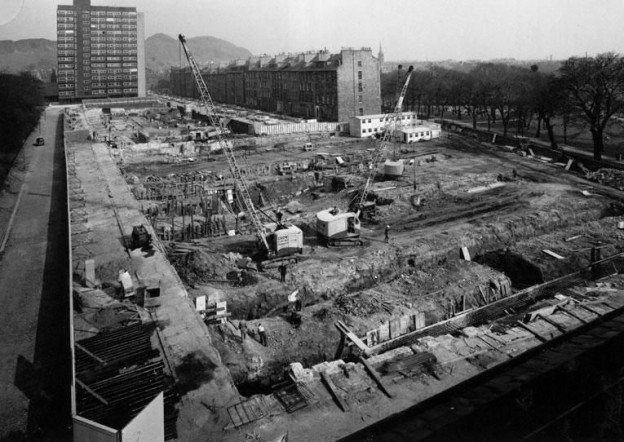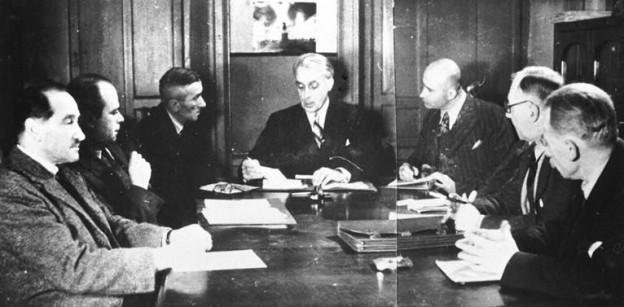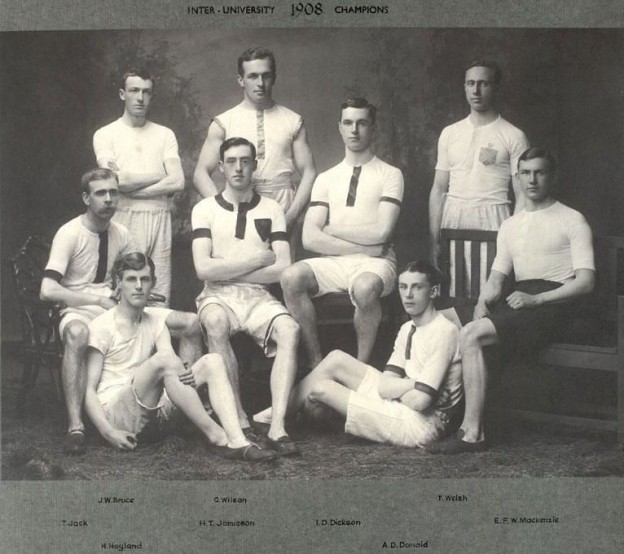The idea for new and improved medical buildings had been mooted since 1869 and letters in this bundle refer to the N[orth] College Street Improvement Committee. There are also letters from David Baxter from Kilmaron in Fife, who was to bequeath £20,000 to the University Building Scheme on his death.
It was this bequest that allowed the “General Building Committee and Acting Sub Committee” to start looking in earnest in Jan 1874 and a Public Meeting to raise funds was held in April 1874 in Edinburgh, with another in London in December of the same year. This public appeal raised £82,000 and an application was made to the Government for the rest of the money . It was estimated that the cost of erecting the new buildings and purchasing the site would be £187,000.
The Government voted the University £80,000 payable in four instalments, and further appeals increased the amount raised. The money was administered by Trustees after the parliamentary money was granted in 1874. Each time a new issue arose regarding the building work, a sub-committee was established, although they all reported back to the main building committee and so references to their activities are in the main run of minute books.
Between 1870 and 1874 three sites were considered for the new medical buildings. These were Chambers Street, the New Royal Infirmary grounds and Park Place and Teviot Row near Reid’s Music Room . A problem arose over a “servitude”in Park Place Lane and it was this site which was considered the most appropriate by 1874. Land had to be swapped with the City of Edinburgh Road Trustees in 1875 and also in 1875 a subcommittee was formed with the intention of removing any remaining servitudes over any part of the site.
An architectural competition was held to determine who should design the new buildings and a number of leading architects were invited to submit entries. After consultation to determine the requirements of the faculty of medicine for the new building, and discussion of the comparative merits of the plans , the minute for 29 Jan 1874 stated “Mr Rowand Anderson to be employed as Architect for the new building of the University.” The design as shown in the image above was modified however, the San Marco-type campanille never been having built.
Once the new medical buildings were nearing completion, there was still no Academic Hall in existence as the University had run out of money. In 1886 one of the University Buildings Extension Committee put forward the money for the purpose of obtaining an Act of Parliament so that the University could acquire the site for a new academic hall at Park Street. The compulsory powers required were obtained, but they had a limited time frame and the University needed to find money to fund the hall. William McEwan of the Edinburgh Brewing family, offered to fund the building work if the University would find money for the site in 1886. The sum needed was £12,000 but the University was unable to find this amount. A University deputation went to London to ask the Government to include this sum in the Parliamentary estimates for the year. The Treasury finally offered £8,000 in two instalments in Mar 1887, and William McEwan provided the other £4,000. In June 1888 it was revealed that the new building was to be called the McEwan Hall.
The formal transfer of the New Buildings to the Senatus Academicus was passed by Resolution of the New Building Committee on 26 Oct 1888 . The work of the Building Committee was now considered to be complete, with the McEwan Hall underway, although this was not completed and handed over to the University until 1897 .Between 1903 and 1909 there was a new fundraising appeal which called itself the University Improvement and Expansion Appeal Committee.
University Buildings Extension Scheme, Ref: EUA IN1/COM/B2





